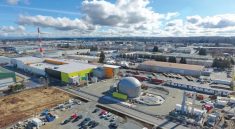Composting nature’s recycling, Feed the soil and let the soil feed the plants, Growing a greener world advice, Organic nutrients broken down and digested
Granny says: “Waste not want not.”
From Growing a Greener World.
“Feed the Soil, Let the Soil Feed the Plants – The Heart of Organic Gardening”
“Feed the soil, and let the soil feed the plants. It’s one of two axioms I live by when it comes to gardening advice.
Feed the Soil and Let the Soil Feed the Plants with Compost
Compost that I made from kitchen scraps, shredded paper, coffee grounds and yard debris. The result is black gold for the garden. If you can do only one thing for your garden soil, add compost.
But if you’re like many, I know what you’re thinking; Soil doesn’t need the nutrients; the plants do. So how does feeding the soil help our plants? There is another world below the soil surface that most home gardeners don’t fully appreciate. Yet soil scientists tell us that in ideal conditions, it is teeming with billions of beneficial microorganisms that provide plants with everything they need to grow and prosper naturally.
Of course, that assumes we haven’t desiccated the soil with excessive salts that come from overuse of synthetic fertilizers. Instead, we should improve the soil with a steady supply of organic matter- compost, shredded leaves, or aged manure- to promote plant growth by maintaining a healthy soil food web.
Think of it regarding our own bodies. If we’re trying be as healthy as we can, do we fill up on a bunch of junk food every time we’re hungry? Or do we opt for something that satisfies our hunger craving but also isn’t loading our bodies with a bunch of fat building empty calories? It’s the junk food vs. whole foods argument, but it can be applied to plants, too.
Plants can get their primary nutrients in one of two ways. The first is through manmade synthetic fertilizers. This is typically salt-based compounds which include nutrients such as nitrogen, potassium, or phosphorus. Those chemicals become available to the plant as the particles dissolve, or when they pass by the roots, as with water-soluble fertilizers.
To be sure, this is a proven way to get nutrients into the plant quickly. And it works—very well. But so does junk food to ease your hunger pangs—temporarily. While your plants will respond to the fertilizer, and your taste buds will love the junk food, is that really how you want to take care of your health… or the health of your plants long term?
Nutrients that aren’t immediately taken up as they pass by the roots are gone forever. And that says nothing about the salt remaining behind. To make matters worse, the excess and unused chemicals pass through to aquifers, or as runoff into watersheds. Either way, the damage downstream to plants, wildlife, climate and humans can have adverse consequences.
While it’s true that it would take a lot of salt residue to significantly harm all the living organisms in the surrounding soil, it does have an adverse effect, especially cumulatively. That brings us to the second method of delivering nutrients to plants, the alternative to synthetic (junk food) fertilizer.
It’s organic matter such as compost and organic fertilizer that builds the lasting health of the soil. If synthetics are junk food, then this organic matter is health food… and my method of choice for building long-term soil quality.
In this method, rather than trying to satisfy the immediate craving by supplying a quick fix with no real lasting nutritional value, the focus instead is on giving soil what it needs to naturally provide nutrients that are available to plant roots when needed most.
Feed the Soil-Compost Rich with Living Organisms
The creatures that dwell in soil, from those that you can see like these red wiggler worms, as well as those you can’t, such as bacteria and fungi, are the great digesters of the organic matter we put into our compost heaps. Without them, and we would have no compost
These organic nutrients must first be broken down and digested by soil organisms, from bacteria and fungi to other soil-dwelling creatures including small insects up to the mighty earthworm. Collectively, they release nutrients in an organic form that plants can use, while also improving soil structure.”
Read more:
http://www.growingagreenerworld.com/feed-the-soil/




